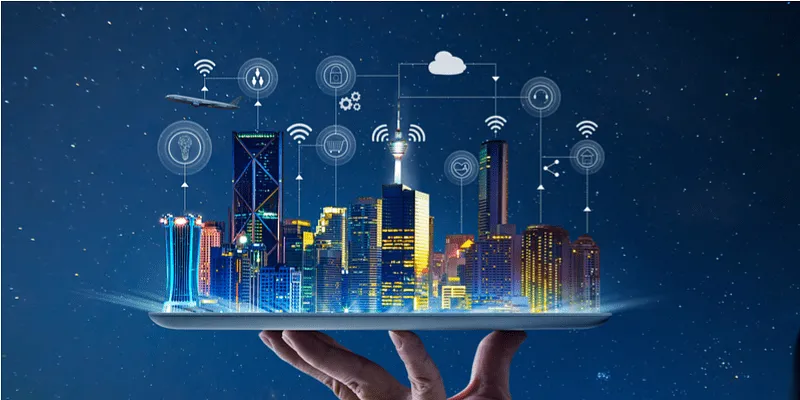[Good Governance] Outcomes-as-a-Service (OaaS): Transforming safety and citizen services
This business model democratises access to the best of smart technologies for cities and communities paving the way for better liveability and improving the quality of life of citizens.
What if a business tells you that instead of selling smart cameras and video surveillance systems, it offers public safety by helping avert and reduce urban crime and road accidents?
Instead of selling intelligent traffic management systems, what if it puts across the value proposition as making city traffic flow smoother, helping citizens save on time lost in traffic jams, save on fuel cost and reduce carbon emissions?
The list can go on to include public services ranging from lighting, waste collection, parking to even public Wi-Fi. Some might see this as a marketing spin, shifting the focus from the products and their features to the resultant benefits to the customers, which in this case are community operators such as city governments, city managers and eventually the citizens and societies at large. After all, customers have always wanted solutions to problems, not products or services.

For businesses to tap into this opportunity, they will need to combine two critical elements – digitisation and servitisation.
What can transform this shift in perspective from a marketing spin to a compelling revenue-generating business model? The answer to this is two-pronged. One, by demonstrating and quantifying the benefits of the offering and two, by enabling the customers to monetise these benefits in the form of increased revenue and reduced costs.
The Need for Outcomes Business Models for Digitizing Urban Infrastructure
Since March 2020 when COVID-19 was declared a pandemic, we have witnessed an acceleration of digital adoption with city governments harnessing the potential of smart connected technologies, to devise pandemic mitigation strategies to protect citizens.
With governments having less money and more scrutiny on technology investments, there was a need for both financial and technology solutions which are evidence-backed, with a clear monetary return on investment (ROI) and in alignment with socioeconomic and environmental imperatives for the citizens.
Looking at the macros, a BCG study has estimated the size of the market for outcome-based software solutions to be $150 billion in 2020, with a CAGR of 11 percent. For businesses to tap into this opportunity, they will need to combine two critical elements – digitisation and servitisation. I will look to exemplify how outcomes can be delivered ‘as a service’ in the urban infrastructure digitisation space
Defining Outcomes
For the public sector, outcomes are all about the value obtained by turning data generated through digitizing urban infrastructure into real-time actionable insights that help community operators achieve operational efficiency and better decision-making, resulting in improved livability for citizens.
Livability is determined by greater public safety, smoother congestion-free traffic, litter-free neighborhoods, cleaner air to breathe and supply of safe drinking water, access to enhanced and inclusive public services using digital means could be a few outcomes that come to mind.
Each of these can be obtained via digitisation, i.e. by using IoT-powered technology as an enabler to help cities achieve their goals of social, economic and environmental sustainability.
Giving Outcomes a Monetary Value
The essence of an outcomes business model in the space of urban infrastructure digitization lies in the ability to translate these outcomes into a tangible monetary value, for servitization to be made possible. This can be realised in the form of cost savings, unlocking new streams for revenue generation and increasing revenue collection from existing ones, for paying back the cost of the technology deployment.

Screen owners can help advertisers deliver advertisements that are personalised and contextual, and therefore more engaging for their prospects
Let us look at some of these outcomes and map out how community operators stand to benefit monetarily:
Public Safety
- Increased revenue from efficient detection of traffic law violations and raising tickets
- Cost savings from centrally controlled street lighting
- Monetisation of crime and traffic violation data
Smoother Traffic
- Increased revenue from parking user charges
- Increased revenue from advertising in parking lots
- Fuel cost savings for public transport
Cleaner Environment
- Reduced fuel and resource costs through real-time route optimisation of waste collection trucks
- Increased revenue from collecting fines for illegal dumping
- Monetisation of environmental data
Enhanced and Inclusive Public Services
- Increased revenue from advertising on digital assets including public Wi-Fi
A business model laying emphasis on customer-centricity and results
Adoption of a revenue model like Outcomes-as-a-Service (OaaS) enables businesses to evolve customer relationships beyond being a one-time transaction into a partnership that is deeper, and value-driven. It entails going the distance to understand the challenges customers face and coming up with solutions to help overcome them.
With payments tied to achieving solution SLAs and project KPIs, businesses adopting this model need to have the confidence in their technology which needs to be scalable and have the ability to assume project risk with access to capital.
What outcomes-driven projects look like
This model has been implemented in the city of Erie, PA. (US), where free public Wi-Fi access was set up across 8 Federal Opportunity Zones. The payback for the capital investment was in the form of monetizing the Wi-Fi landing page with advertisements from local businesses besides cost savings from smart lighting.
In the field of traffic safety, the model finds application in a city in the Middle East where the payback for setting up CCTV cameras and live-tracking school buses was in the form of violation detection and fines collected from motorists violating the school bus ‘STOP’ arm rule.
Looking forward: Outcomes for the Digital Out Of Home (DOOH) Advertising space
While traditional OOH ads operated in a one-to-many environment, DOOH advertising can overcome the hurdle through audience analytics. Screen owners can help advertisers deliver advertisements which are personalised and contextual, and therefore more engaging for their prospects based on audience attributes, brand preferences, time of day, location among other contextual factors.
With digitisation comes the need for greater accountability. Advertisers would need recorded proof of their advertisements having been played at the designated digital display during the chosen time slot. Analytics also comes into play to validate the audience numbers who have passed by the signage and engaged with the advertisement, to give advertisers insights into the efficacy of their outdoor campaigns.
There is immense scope for OaaS to work in this segment for the reason mentioned above. It is a win-win for all stakeholders. Display owners, be it the city administration or public spaces such as malls, transport hubs campuses, communities, stadiums, amusement parks, gaming alleys, casinos etc. benefit from improved ad inventory offtake and ad revenues. Advertisers benefit from crowd analytics to give them a better bang for their buck, while improving footfalls and increasing sales.
All in all, this business model democratises access to the best of smart technologies for cities and communities paving the way for better liveability and improving the quality of life of citizens. It also makes the deployment economically sustainable for customers.
YourStory’s flagship startup-tech and leadership conference will return virtually for its 13th edition on October 25-30, 2021. Sign up for updates on TechSparks or to express your interest in partnerships and speaker opportunities here.
For more on TechSparks 2021, click here.
Applications are now open for Tech30 2021, a list of 30 most promising tech startups from India. Apply or nominate an early-stage startup to become a Tech30 2021 startup here.
Edited by Diya Koshy George

![[Good Governance] Outcomes-as-a-Service (OaaS): Transforming safety and citizen services](https://images.yourstory.com/cs/5/f5a7f3304b1211e9b6645b8ae897d03e/Good-Governance1-1629986699141.png?mode=crop&crop=faces&ar=2%3A1&format=auto&w=1920&q=75)






